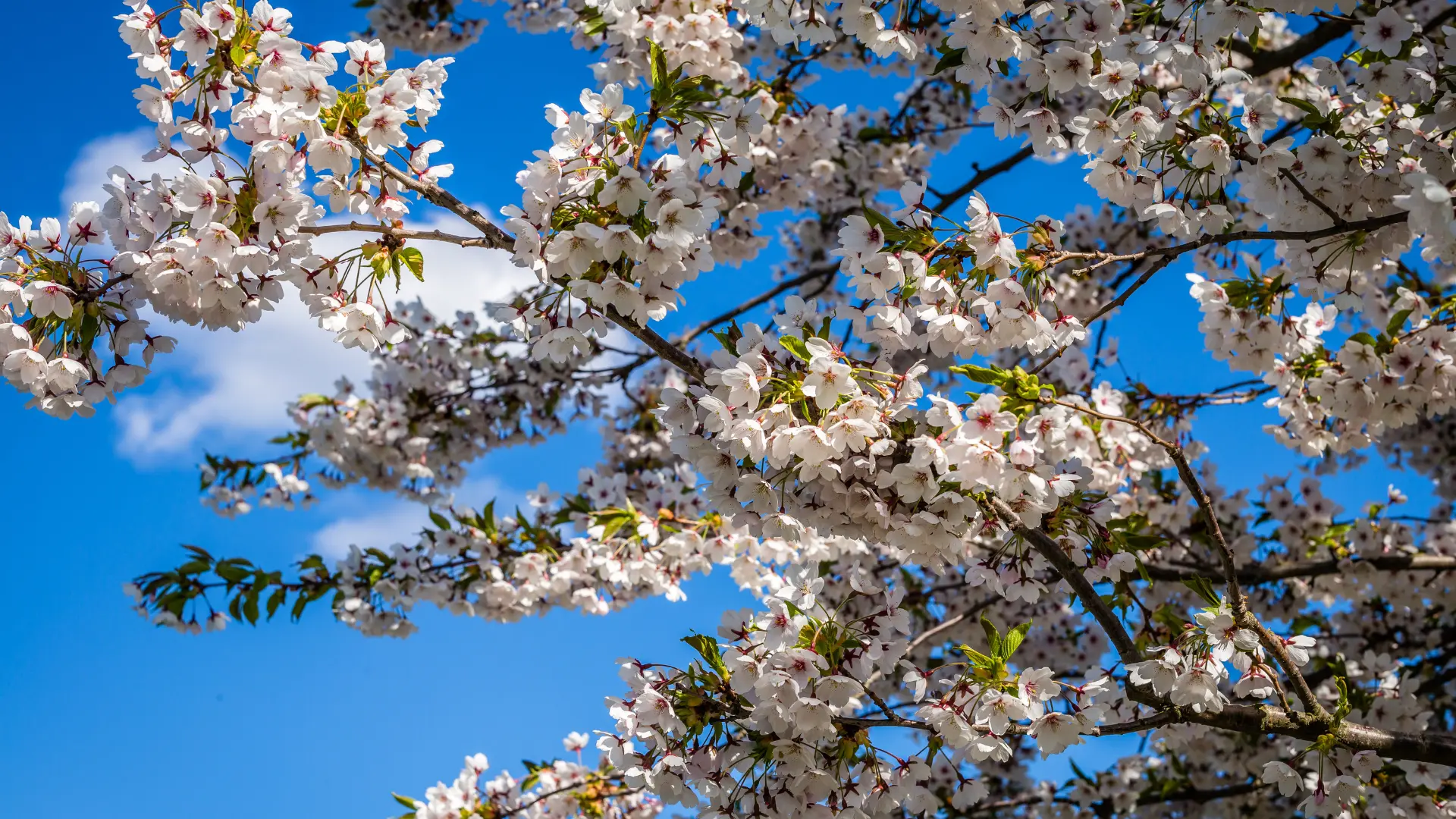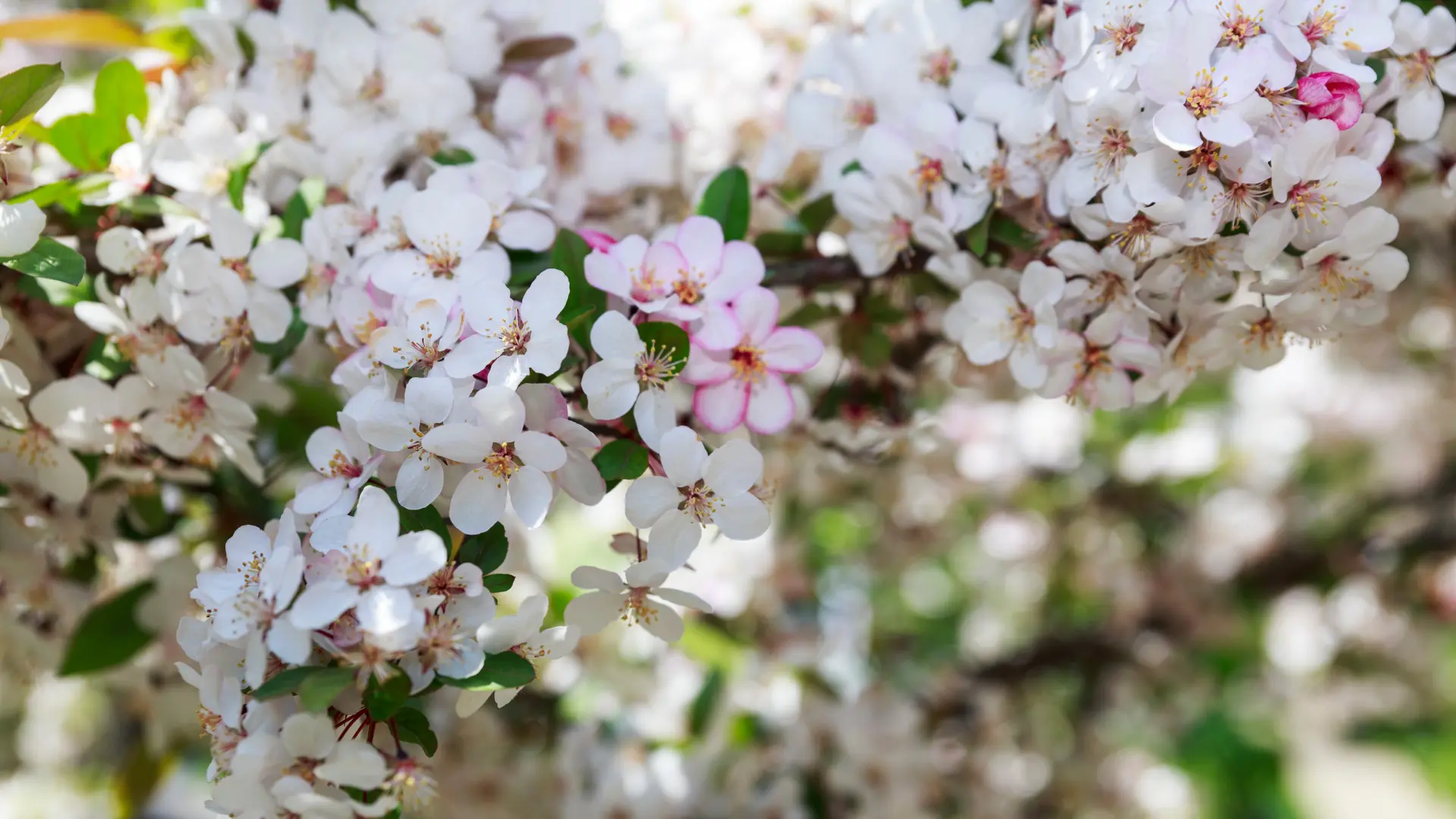The sight and scent of apple tree blossoms whenever I drive through the country in Spring almost always brings tears to my eyes.
What is this beauty? What is this purity? Some people, myself included at some point, are not aware that apple trees largely produce blooms that are so beautiful.
Sure, it is a fruit tree. It has to blossom to attract pollinators before fruits can be formed. But seeing an apple tree in full bloom makes me wish I was a pollinator.
Having an apple tree on your property is a great idea, and growing one can be extremely rewarding. With adequate knowledge and preparation, it can be a fun process for you.
Apple trees are all-season providers, producing blooms early in the year, light shade when it’s hot outside, and delicious fruit later, making them a smart addition to your garden.
When do Apple Trees Bloom?

The sight and scent of apple blossoms are synonymous with springtime in many places. However, different apple tree varieties bloom at different times throughout spring and summer.
Apple Trees can be grouped into three categories:
- The early-season bloomers will begin to flower in early spring as soon as the temperature gets warmer.
- The mid-season bloomers.
- The late-season bloomers may not bloom until the end of summer.
These blossoms get pollinated by honeybees and other insects, and the fertilized ovary becomes the fruit. This way, the more blooms you get, the more fruit you can expect.
How Long do Apple Trees Take to Bloom?
The amount of time it takes an apple tree to mature and fruit depends on the variety you have. The larger the tree, the longer it’ll take.
Full-size apple trees can take four to eight years before they start blooming. The dwarf variety may begin to produce fruit two to three years after planting.
Adding the fact that growing conditions have a significant impact on the time your tree will take to bloom, apple trees can take five to 10 years to fruit when grown from seeds.
It takes so long to bloom because it has to get sturdy enough to bear the weight of all the fruits that come after blooming.
If it develops fruits before it is strong enough, the tree branches can break under the weight of all the apples.
How Long do Apple Trees Bloom for?
The blooms are important to apple production. Depending on the variety, they usually stay on the tree for three to 10 days.
The fruit will begin to set five to 10 days after most of the petals have fallen off the flowers. If the flower is pollinated, the fruit will begin to grow.
How to Care for Blooming Apple Tree
Make sure your apple tree gets the minimum recommended amount of six hours of light daily. Like most fruit trees, apples need sunlight to produce fruit.
The more sunlight your tree gets, the better blooms and fruits you’ll get. Let nothing shade your tree while it is blooming.
The sun will also dry up the soil more, especially when needed, so the roots do not have to sit in excess water, limiting disease risk.
Give your tree an inch of water every week. During the hot summer, if there is little rainfall in your area, supplement with irrigation or regular watering.
You can mulch the soil to help with moisture retention. Amending with compost or other organic material to improve soil drainage will be appreciated by your tree.
Add organic or inorganic fertilizer in spring and keep the soil slightly acidic. A pH between six to seven is recommended for the greatest chance of success.
After your apple tree has finished blooming and the fruits have been set, you should thin out the clusters to maybe one or two per bunch.
This will reduce your harvest, but your fruits will be larger and sweeter, not having to compete so much to get nutrients, and sunlight will get to all areas of the tree better.
How to get Apple Trees to Bloom

You’re growing your apple tree, and all seems well. However, it’s time to bloom, and nothing is happening. Why won’t your trees bloom or produce fruit?
Maturity
An apple tree takes years before it can be mature enough to flower. It won’t go into fruit production mode if it is too young, no matter how much you try.
If you are impatient, get a dwarf variety that is sure to fruit in a couple of years, so you don’t have to wait too long.
If you’d rather take the patient route, continue loving and caring for your tree. When it’s mature enough, you won’t have cause to regret waiting.
Chill Hours
Apple trees require chill hours to be able to produce fruit. They need to stay in temperatures between 32 to 45 degrees Fahrenheit for hours during the tree’s dormant period.
If your zone has mild winters, your apple tree may still be lying dormant, having yet to receive the signal that spring has arrived.
Check out the different varieties and look for one hardy to your zone that can fruit with winter temperatures.
If you had an unusually mild winter, you would need to wait a year to see blooms on your tree if it gets the required chill in the next cold season.
Shade
Because apple trees need a lot of sunlight, it will likely produce little to no flowers and fruits if your tree is shaded.
Shade from an overhanging tree branch can be corrected by cutting off the branch, but if your house shades your tree, the best thing to do is to transplant it to a sunny spot in your yard.
Overzealous Pruning
The best time to prune your apple tree is in winter when dormancy ensues. You should remove the diseased, dying, or dead branches.
Retain as many spur-bearing branches as possible to ensure that your tree has enough places for flowers to grow.
Pruning too much or at the wrong time will make the plant put too much energy into vegetative growth rather than reproductive growth.
If your tree has already been over-pruned, wait until next year for the current growth to bear new spurs for the flowers to grow.
Excess Nitrogen Levels
If you fertilized your apple tree too heavily when using a nitrogen-rich fertilizer, chances are there is now too much of that nutrient in the soil.
Excess nitrogen will shift an apple tree’s focus to wood development and foliage production rather than flower and fruit production.
To avoid applying too much nitrogen, use a balanced NPK fertilizer on your apple tree.
For an overly fertilized tree, you can transplant it somewhere that has not been fed in years so it can start afresh.
